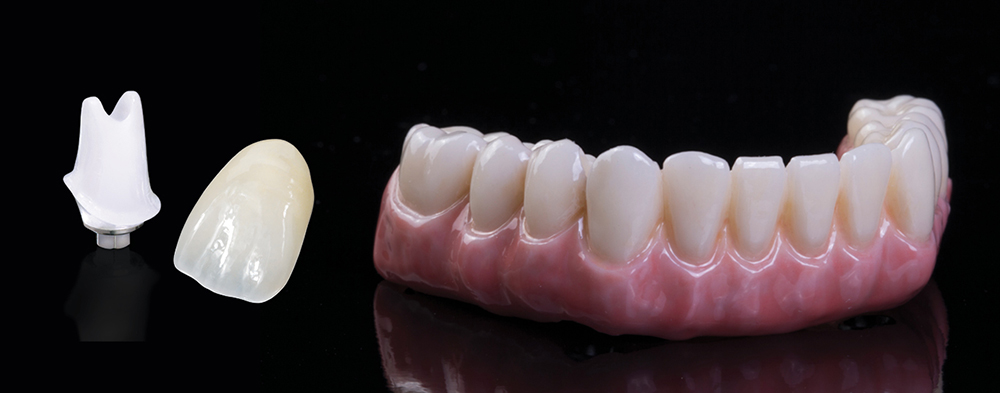5 Ways to Increase Implant Case Acceptance

Implant treatment is one of the most life-enhancing services that dentistry can offer. Dental implants are also an area of tremendous potential growth for your practice and, given their convenience and permanence, are seen as the best option by most edentulous patients. However, a surprising number of patients do not accept implant treatment when it is presented. Rather than looking at this as a negative, practices should view these patients as opportunities for boosting production.
FIVE REASONS WHY PATIENTS REJECT THE DENTAL IMPLANT OPTION
There are five main reasons why patients reject dental implants. I believe that it’s important to understand these reasons so that you can properly design a case presentation process that motivates and encourages patients to accept treatment.
1. Implant case presentations don’t highlight the lifestyle benefits. Dental implant patients always have other treatment options, including doing nothing, getting partial or full dentures, or restoration via crown & bridge. This means that the patient must make a choice between treatments that have varying impacts. Case presentations that focus more on lifestyle benefits — comfort, ease of cleaning, preservation of bone and facial structures, and self-confidence, to name just a few — than implant materials and procedures will help patients see implants as the best choice.
2. Dental implants are perceived as expensive. Implants are expensive relative to the typical day-to-day expenditures that most people face. They are also expensive because there is often little to no insurance coverage. This forces patients to choose between implants or other personal expenses that may be more pressing.
3. Dental implants are surgical. Implants are perceived to be more painful than dentures or crown & bridge restorations. Many patients fear surgical procedures, while others simply do not want to deal with the inconvenience and healing required.
4. Implant restoration and recovery takes time. Implant dentistry involves surgery followed by a restorative procedure. This means more time will be dedicated to implant treatment and patients will have to spend more time away from work, their children or other important responsibilities.
5. Patients take time to decide and then make no decision. Many implant cases are lost because the patient loses motivation or interest following a treatment presentation for which no follow-up appointment occurs.

Learn 10 personal things about each new patient you see. Taking note of their family dynamics and some of their hobbies will make future conversations with them flow very easily.
There are other factors that can come into play in a patient’s decision not to receive dental implants, but those listed above are the most prevalent. And there is one other barrier to case acceptance that should be understood: the number of patients who never seek a dental implant consult. According to the Levin Group Data Center, 35% of patients referred by general dentists to a specialist for implant consultation fail to make an appointment. This would indicate that these patients don’t fully understand or appreciate the benefits of implant dentistry and don’t have the motivation or incentive to find out.
INCREASING IMPLANT CASE ACCEPTANCE
There is no standardized approach that will guarantee case acceptance. Each patient is a unique individual who will react to different forms of educational and motivational psychology. However, there are certain standard aspects of implant case presentation that will enhance the process and increase case acceptance. Here are five:
1. Make the patient your friend. We teach a concept called the “Golden 10,” which means that you learn 10 personal things about each new patient and continue to get updates from current patients. There’s a tremendous affinity that occurs as a relationship moves from a professional level to a personal level. By learning 10 personal things about each patient, you’re creating much stronger relationships. The simple technique of creating a more personal relationship builds a higher level of trust that will help encourage the patient to be more open to learning about dental implants and accepting treatment.
2. Dedicate time in a quiet setting to talk to the patient. Dental practices are often chaotic environments — and even more so with the advent of COVID-19. However, implant case presentation requires a calm and relaxed environment in which the patient and doctor (or treatment coordinator) can have a full conversation about the recommendation. Ideally, there will be an uncluttered consult room where the doctor and patient can sit down uninterrupted. Your body language is important as well. We recommend sitting eye-level with the patient so that you are engaging as equals, leaning back in a relaxed manner to express that you are completely focused on the patient, not crossing your arms or legs, leaning forward at times to create an additional sense of connection, and smiling even when wearing a mask. Patients detect these cues, and they feel more comfortable thinking through the decision of whether to accept dental implants.

To facilitate a “case conversation,” make sure to stop talking and involve the patient in the conversation after approximately every 12 sentences.
3. Have a conversation, not a presentation. Levin Group is teaching a relatively new concept that we call “case conversation.” Rather than the doctor or treatment coordinator doing all the talking, the case presentation should be more of a conversation. A simple rule for facilitating this is that after approximately every 12 sentences you should stop talking and involve the patient in the conversation. This can include asking the patient if they’re following what you’re saying or if it is interesting to them. By involving the patient in the conversation, you create engagement, and engagement creates more interest, trust and commitment. Patients who have a higher level of participation in case presentations feel like they’re more involved in the process, and they tend to become comfortable accepting treatment.
4. Highlight time, comfort and longevity. These are some of the most important factors that can impact a patient’s decision about getting implants. The case presentation conversation should include an explanation of the amount of time that implants will take, both surgically and restoratively, and how the patient’s comfort will be maintained. The reality is that dental implant treatment today takes less time than it did in the past, and comfort can be maintained at a reasonably high level. This needs to be communicated to patients to give them the confidence and reassurance to accept treatment. Confidence is vital in guiding the patient’s decision-making about implants, and addressing the time and comfort factors to the satisfaction of the patient is critical to piquing their interest in treatment.
Along with time and comfort, longevity is high on the list of important factors that influence the patient’s decision. When choosing implants, patients undergo a surgical procedure that requires time and money, so they want the end result to last. The doctor or treatment coordinator must be proactive in explaining the high rates of implant longevity and that, for many people, implants will last the rest of their lives. This makes the patient’s time and comfort investment seem minimal compared to the lifetime benefit of excellent oral health, comfort and esthetics.
5. Cost: the final frontier. Cost is always the final factor in patient decision-making. Other than the rare wealthy patient, you can expect that most people will consider fees and payment options as a major part of their decision on dental implants. But, as the old business adage goes, “It’s not how much it costs — it’s how they have to pay for it.” Therefore, the doctor or treatment coordinator needs to be very skilled and follow excellent scripting in presenting financial options to patients.
One effective strategy, which is also effective as a post-COVID–19 practice success plan, is to offer interest-free financing. Companies like CareCredit® (Synchrony Financial; Stamford, Conn.) have different levels of interest-free financing that make it easier for patients to accept treatment. When patients know this, they become more open-minded during an implant case conversation. Other options can include a discount for payment up front, a multiple-appointment payment plan or traditional patient financing.
Working with patients to identify the best option will go a long way toward helping the patient come to a positive decision about dental implants. When presenting financial options, you should be relaxed, comfortable and confident that you’ll find a solution with the patient to make treatment affordable. A positive, helpful and caring attitude will show people that you’re doing your best to give them the opportunity to pursue a treatment that is in their best interest.

Whether the treatment involves a single tooth or a BruxZir® Implant Prosthesis, emphasize to patients that implants are a long-lasting option that justifies their time and comfort investment.
SUMMARY
Implant dentistry is an outstanding option for patients who are missing teeth, and it can provide improved quality of life. Unfortunately, not all patients understand implant dentistry even if they’ve heard about it or seen it on television commercials. The good news is that creating a case conversation in which the patient is engaged and becomes educated about implant dentistry will help to shape the patient’s expectations and confidence. Addressing the five points previously listed will help you to view each patient as an individual who needs a customized conversation to generate confidence as well as a financial option that allows them to afford treatment.



